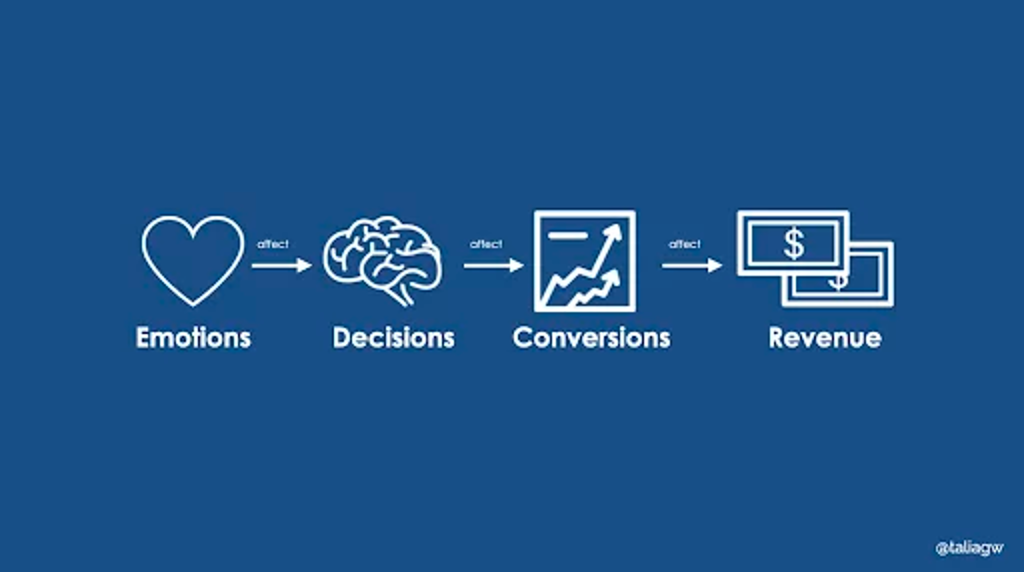How can I use emotional targeting in my experimentation program?
This interview is part of Kameleoon's Expert FAQs series, where we interview leaders in data-driven CX optimization and experimentation. Talia Wolf is the founder of GetUplift and was named one of the most influential experts in conversion optimization. Talia has trained companies worldwide and taught on stages such as Google, MozCon, CTAconf, Search Love, and many more.
What is the Emotional Targeting Methodology, and how can I use it in my experimentation program?
Emotional targeting is a methodology designed to uncover how your prospects make decisions. It helps you understand why people buy from you and what you need to show, write and present on a page to convert more people into loyal customers or clients.

Using this methodology makes it simpler to identify why people aren’t converting and what changes you need to test in your funnel to increase conversions.
Uncovering leaks, analyzing where they are, and discovering what’s not working is the first (and most straightforward) part. Once you’ve gone through that process, you need to come up with different hypotheses that can fix and optimize your funnel, and that’s precisely where emotional targeting (or emotional marketing) comes in. But, one of CROs' most challenging aspects is figuring out what changes to make once you’ve identified a leak in the funnel.
The Emotional Targeting Methodology helps uncover your audience’s actual intent, the ‘why’ behind the action they took, and their desired outcome (the ‘what’). In-depth customer research helps;
- You understand your prospects’ pains, challenges, and roadblocks.
- You know what your prospects want to feel after finding a solution.
- You know what your prospects want to achieve.
Understanding the above emotions and motivations makes it easier to identify what’s not working on your page and what messages and design changes to test.
The Emotional Targeting Methodology consists of the following steps:
- Customer-first research.
- Auditing your existing funnel and website through a new lens.
- Testing new variations based on insights.
- Analysis and continuous optimization.
How can I uncover the emotional drivers of my users if the drivers are subconscious?
Many of our prospects’ drivers are, in fact, subconscious, and to discover them, we need to conduct in-depth customer research in the form of surveys, interviews, mining online conversations, and speaking to our target audience.
The key to uncovering these subconscious triggers is asking the right questions. Steering away from tactical questions about your solution, e.g., rating your website/rating features or asking them direct questions that will trigger an automatic “rational” decision. For example, instead of asking customers why they chose you as their solution (likely to prompt a feature or price-based answer), ask them what they would miss the most if they could no longer use your solution. This question will give you a great understanding of the real emotional value you deliver.
How do I know if the emotional drivers I uncover in small-scale user research apply more widely to my customer base?
The best way to know if emotional drives apply more widely to your customer base is to A/B test them. Additionally, see if themes repeat (e.g., specific pain points) across multiple research methods, indicating that they apply more broadly. Engage multiple researchers to work on the project to avoid biasing your research while analyzing it for recurring themes. You should also aim to have a minimum sample size of 7-15 people for interviews and a few hundred for surveys.
Ultimately, customer research is used to help us hypothesize and develop meaningful ways to optimize and test our funnels. A small sample size of data can still give you valuable insights and help you create high-converting copy and messages. You can start by testing these insights on your landing pages or emails (with specific segments) to measure the response.
If purchase decisions aren’t logical, is there any point in using feature-based messaging?
Ultimately it comes down to pairing your features with the emotional results your customers are looking for.
For example, instead of saying “based on bio-feedback science,” you could say, “Our bio-feedback technology ensures you will transform your posture, eliminate pain and build healthy habits that last.”
Given the endless permutations of a user journey, how can I understand our users' mindsets at different points in the funnel?
Set up multiple research points for prospects and existing customers, starting with surveys, polls, and quizzes. When you only look at quantitative data, it’s hard to know how to treat each part of the journey because quantitative data only shows you the ‘where.’
Customer journey maps are often considered a solution and can be a good place to start, but they have limitations. A funnel is rarely linear, and journey maps often don’t consider stages of awareness or time between steps. Both aspects can impact the content needed at each part of the journey.
You have an active Youtube channel where you throw optimization gold to the masses. What can other thought leaders looking to go this route do to improve their on-camera presence?
Right now, we’re working on pushing out high-quality content. To do this, we ask our audience (email list and Facebook group) what are their burning questions and answer those on video. We also use keyword research and social listening to see what interests people.
The way I shoot the videos is to make sure they're SUPER actionable. I cut the fluff and get straight to breaking down the topic. Each video consists of concrete steps to take, and we usually offer an accompanying worksheet.
In the past, I’d do much longer videos, but now I’m focused on short and highly-actionable videos you can consume in under three minutes. It’s working well, but we still have a long way to go.



